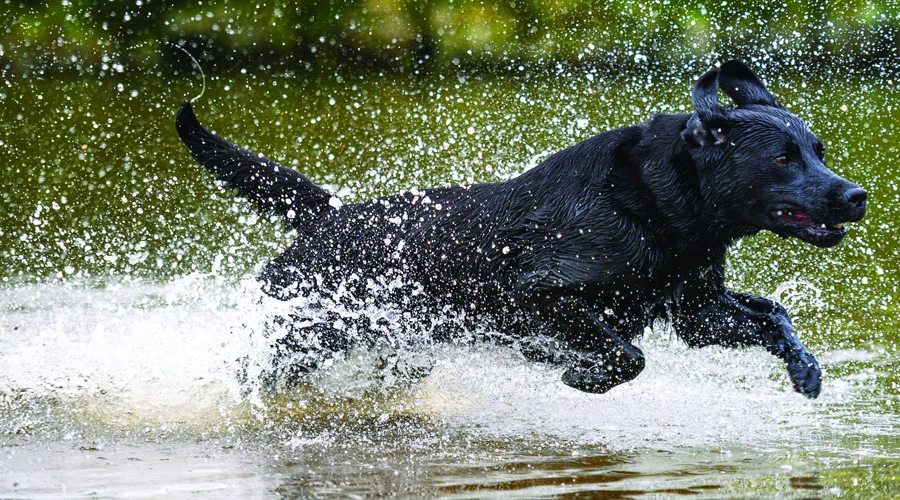Diagnosis of osteoarthritis in working dogs
By Sarah Love, DVM
Diplomate American College of Veterinary Sports Medicine and Rehabilitation
Diplomate American College of Veterinary Internal Medicine
Certified in Canine Rehabilitation Therapy and Veterinary Spinal Manipulation Therapy
Working dogs, like retrievers, give a great deal of effort to get their work done, day after day. These dogs will often work through pain and injury to their detriment to do what is asked of them. For this reason, their owners and handlers have the responsibility to monitor them closely and have regular physical exams by veterinarians to maintain their physical health. Ideally, this would be done by a sports medicine or physical rehabilitation veterinarian who fully understands what the dog’s job entails.
Canine osteoarthritis (or simply known as “OA”) doesn’t just affect old dogs. While it typically occurs in middle to older aged dogs, young dogs may also be afflicted with this debilitating condition due to orthopedic developmental disease, injury, or repetitive use. Identifying and treating OA as early as possible is the best approach to alleviate pain and dysfunction, keeping working dogs in the best shape possible and mentally happy so they can focus on the work.
Although it clearly affects the dog’s joints, OA should be thought of as a “whole-dog” disease. Progression of OA involves not only the entire joint, but the entire patient as well. Chronic pain affects the quality of life in our dogs, possibly more than we realize because they are so good at hiding pain until joint damage has progressed to the point where there is an obvious limp. It’s important to note that while we don’t know the extent to which chronic pain affects our dogs’ mental health, in people it is well documented to be associated with intellectual issues, including learning and memory functions.
There is a vicious cycle of inflammation and damage happening inside the joint in canine OA. The cells that line the joint are called synoviocytes (“sin-OH-vee-oh-sites”). OA starts with inflammation of these cells, causing a condition called synovitis (“sin-OH-vy-tis”) that results in a cascade of several effects that happen early on, even before OA is visible on an X-ray:
- In response to joint changes, the dog’s immune system sends extra white blood cells to invade the joint and synoviocytes
- Enzymes are then released which cause damage to the normal cells and structures of the joint
This forms an “inflammatory soup” that sends signals to the nerves in the area, causing joint pain - Inflammation is a common word that is often misunderstood. In straightforward terms, it means there is an increase in the number of white blood cells. It’s a normal function of your dog’s immune system and it occurs when there is a need for white blood cells in an area due to a wound, infection, or injury. Inflammation also occurs when the immune system is triggered by something to cause damage on itself; this is termed ‘autoimmune’ arthritis.
The diagnosis of OA is largely based on the dog’s medical history and the physical exam. The exam enables the veterinarian to identify any joint swelling, pain on joint manipulation, and signs of lameness/limping. Additional diagnostics that can be performed by your veterinarian include X-rays and taking a sample of the joint fluid to have it analyzed for different types and amounts of white blood cells. This tells us what type of inflammation is present and helps us diagnose the specific type of arthritis that is present and what treatment would be recommended.
Synovetin OA® is one of the newer options available specifically to treat canine elbow OA. It’s a completely different way to relieve the arthritis pain that causes limping and lameness in dogs, especially in younger, working dogs. And it’s one that doesn’t require daily pills or chews, and doesn’t involve surgery and the corresponding recovery. With Synovetin OA, all it takes is a single, simple procedure that provides up to 1 full year of relief to get a working dog back to doing his or her job, happily and healthily. Read about these Synovetin OA success stories.
Stay tuned for the next article on how canine OA in working dogs is treated.
If you’d like more information about canine OA and Synovetin OA, email dogsrun@exubrion.com or call 866-DOGSRUN (866-364-7786).




